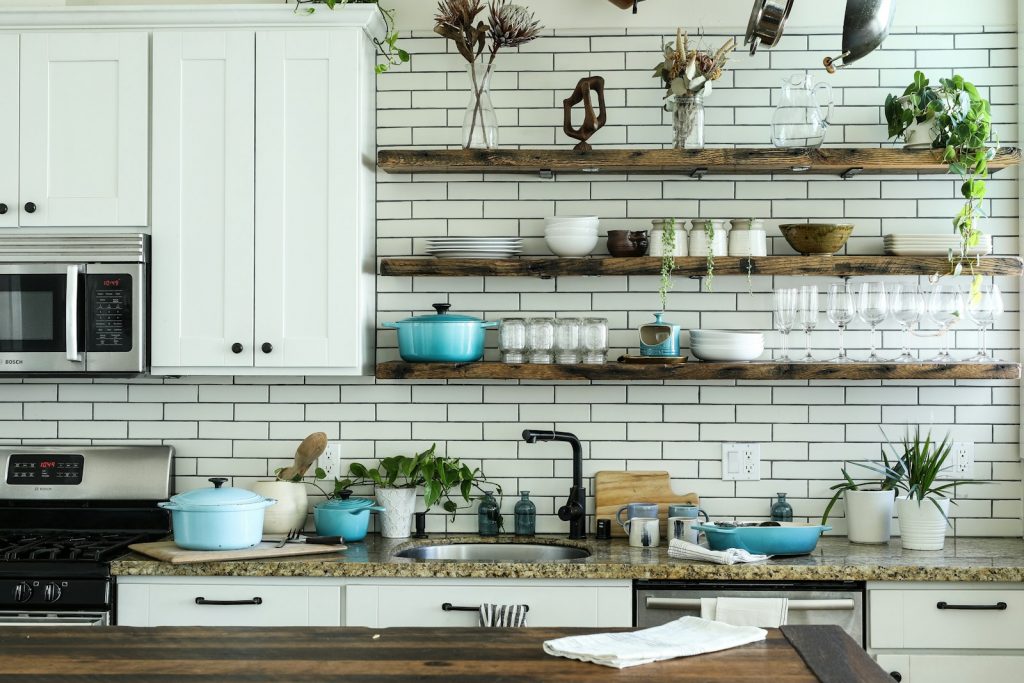Adopting a Zero Waste Approach in the Kitchen
Adopting a zero waste approach in the kitchen is essential for fostering sustainability and reducing environmental damage. This concept involves minimizing waste generation, thereby decreasing landfill contributions and conserving resources. For instance, cutting down on food waste eases the strain on landfills and conserves the energy and resources used in food production, including water, fuel, and labor [Source: The Hindu Business Line].
Incorporating sustainable practices, such as meal planning, helps streamline cooking and clean-up processes, making kitchen tasks more efficient. By utilizing leftovers and choosing seasonal ingredients, home cooks can minimize the likelihood of wasted food, turning potential waste into delicious meals [Source: Women’s Health Magazine].
Moreover, implementing zero waste strategies—like using reusable food wraps and composting kitchen scraps—can simplify kitchen management. These practices not only benefit the environment but also enhance the cooking experience, allowing for creativity and resourcefulness in meal preparation [Source: Simply Sustainable Home].
As the demand for sustainable living grows, embracing a zero waste philosophy can transform kitchens into eco-friendly spaces, reducing stress and fostering a healthier approach to cooking and clean-up. For more tips on creating a sustainable kitchen, check out our guide on creating an eco-friendly kitchen.
Tracking Waste in Your Kitchen
To effectively evaluate the types of waste your kitchen produces, consider implementing systematic tracking methods for food waste, plastic usage, and disposables.
Tracking Food Waste
- Waste Diary: Maintain a food waste diary for a week where you log every item discarded, including the reason for disposal (spoiled, dated, etc.). A study found that around 30-40% of the food supply is wasted, emphasizing the need for awareness [Source: Science Daily].
- Visual Assessment: Use jars or containers to store food scraps and leftovers separately. At the end of the week, review the volume and type of waste produced. This visual representation can stimulate more mindful consumption habits.
- Meal Planning: Applying structured meal planning techniques can significantly reduce food waste. Resources like Smart Meal Planning provide insightful strategies for waste reduction [Source: Simply Sustainable Home].
Tracking Plastic Usage
- Inventory Checklist: Create an inventory checklist of all plastic items in your kitchen. Knowing what you have and what you regularly deplete will help in minimizing purchases.
- Substitution Strategies: Transition to reusable options like silicon food storage bags or glass containers. Not only do these reduce plastic usage, but they can also save an average household $100–200 annually on disposable products [Source: Money Talks News].
- Heated Plastics Awareness: Be mindful of heating food in plastic containers, which can lead to microplastics leaching into your meals. Opt for materials like ceramic or glass for reheating [Source: HuffPost].
Monitoring Other Disposables
- Regular Cleanouts: Schedule regular cleanouts of your kitchen to assess and categorize disposables. This helps in tracking waste and keeps your kitchen organized.
- Collection Containers for Recycling: Use designated bins for recyclables and disposables, labeled clearly to prevent contamination.
- Behavioral Reflection: Reflect on your purchasing habits at the end of each week. Reducing unnecessary purchases can lead to more sustainable living standards [Source: Simply Sustainable Home].
Decluttering for a Sustainable Kitchen
Decluttering your kitchen is essential for creating an organized space that helps minimize waste. Here are some effective tips to get started:
- Clear Your Counters: Keeping countertops clear fosters a stress-free cooking atmosphere [Source: Women’s Health].
- Organize Ingredients: Group similar items together in your pantry and fridge to see what you have easily.
- Practice Smart Meal Planning: Plan meals around what’s already in your kitchen, significantly cutting down on waste [Source: Simply Sustainable Home].
- Regularly Assess Your Inventory: At least once a month, check for expired items or things you will not realistically use.
- Utilize Transparent Containers: Clear containers help you see what you have at a glance and motivate you to use them before they go bad.
- Incorporate Vertical Storage Solutions: Use wall-mounted shelves to maximize space and keep your kitchen looking orderly.
Minimizing Waste During Grocery Shopping
To effectively minimize waste during grocery shopping, a few key habits can enhance your approach:
- Shop Smartly: Create a detailed grocery list based on meals planned for the week to avoid impulse buys [Source: The New York Times].
- Buy in Bulk: Purchasing in bulk can reduce packaging waste and save money [Source: Money Talks News].
- Leverage Seasonal Produce: Buying seasonal fruits and vegetables supports local agriculture and helps reduce waste [Source: Simply Sustainable Home].
Reusing and Recycling Kitchen Waste
Reusing and recycling kitchen waste can transform the way you approach cooking and waste management. Here are innovative strategies you can adopt:
- Composting: Composting kitchen waste enriches soil and reduces landfill contributions. Start by creating a compost bin [Source: Simply Sustainable Home].
- Utilizing Scraps in Cooking: Use vegetable peels, stale bread, and citrus peels creatively in recipes to minimize waste.
- Regrowing Food: Regrow food items like green onions from scraps, providing continuous fresh produce.
- Fermentation: Turn food scraps into probiotic-rich foods through fermentation.
- Creating Eco-Friendly Cleaners: Make a natural cleaner from citrus peels and vinegar [Source: Simply Sustainable Home].
- Waste-Free Meal Planning: Purchase only what you need and use leftovers creatively to prevent food waste [Source: Simply Sustainable Home].
Creating a Zero Waste Kitchen
Creating a zero waste kitchen is a fulfilling journey that begins with awareness and actionable steps:
- Embrace Meal Planning: Prevent overbuying and ensure ingredients are utilized effectively [Source: Simply Sustainable Home].
- Shop Mindfully: Choose local, seasonal produce to minimize waste and environmental impact [Source: Simply Sustainable Home].
- Declutter Your Kitchen: Simplifying your cooking space encourages a more sustainable approach to cooking [Source: Women’s Health].
- Use Eco-Friendly Tools: Invest in reusable items like beeswax wraps [Source: Simply Sustainable Home].
- Compost Scraps: Start composting even in small spaces to reduce waste [Source: Simply Sustainable Home].
- Choose Natural Cleaners: Prevent harmful chemicals from entering your environment [Source: Simply Sustainable Home].
Sources
- The Hindu Business Line – A Resilient Environment is Key to Sustainable Agriculture
- Money Talks News – Double Detox: Microplastic-Fighting Habits That Pay Off Fast
- The New York Times – Cost-Cutting Grocery Shopping Tips and Recipes
- HuffPost – 6 Ways You Can Control Microplastics from Getting into Your Food
- Science Daily – A Study on Food Waste Statistics
- Simply Sustainable Home – A Beginner’s Guide to Composting Kitchen Scraps Even in Small Spaces
- Simply Sustainable Home – DIY Natural Kitchen Cleaners: Effective Eco-Friendly Recipes
- Simply Sustainable Home – DIY Reusable Food Wraps: A Simple Eco Kitchen Project
- Simply Sustainable Home – Smart Meal Planning: How to Stop Food Waste in Your Kitchen
- Simply Sustainable Home – Seasonal Eating: How It Benefits Your Kitchen & The Planet
- Simply Sustainable Home – The Ultimate Guide to an Eco-Friendly Kitchen for Beginners and Families
- Women’s Health – Declutter Your Kitchen
- Simply Sustainable Home – Top 10 Must-Have Eco Kitchen Products for a Greener Home


